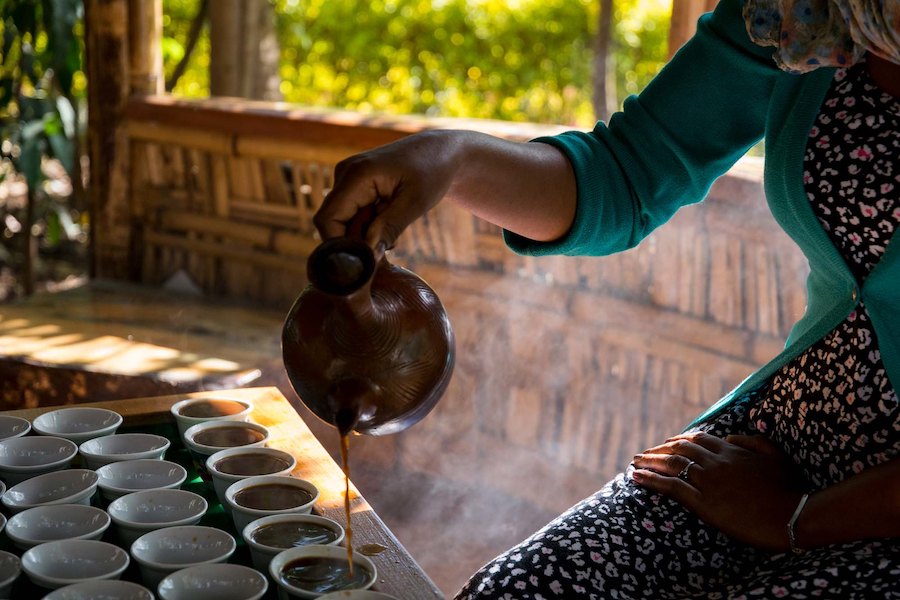
Photo: Fups/Flickr (CC BY-NC-ND 2.0)
Intellectual property has become a powerful instrument for creating wealth. As “creations of the mind,” intellectual property includes symbols, names, and images used in commerce, as well as inventions, literary and artistic works, and designs. According to a US Commerce Department report, intellectual property-intensive industries contributed $6.6 trillion dollars to, or 38.2 percent of, US gross domestic product (GDP) in 2014. In other words, intellectual property is a great source of wealth generation, at least for those who own intellectual property rights, and of national economic development. In addition, intellectual property rights are recognized in Article 15 of the International Covenant on Economic, Social and Cultural Rights (ICESCR) as the right of everyone to “benefit from the protection of the moral and material interests resulting from any scientific, literary or artistic production of which he is the author.” However, as Public Interest Intellectual Property Advisors (PIIPA) points out, “The problem is that only a fraction of the world’s population currently has the knowledge and/or means necessary to access the intellectual property legal system and use those laws.” Such a gap of knowledge and means suggests the potential of intellectual property as a tool to advance human rights in terms of an adequate standard of living, fair remuneration, and cultural life, all of which Articles 7, 11, and 15 of the ICESCR recognize.
Considering the broad social, cultural, moral, and distributive effects of intellectual property that go beyond the economic ones, it is imperative to use intellectual property laws and business strategies in a way that taps the creativity of low-income communities, particularly those in developing countries. When low-income communities actively harness intellectual property, they can participate in “global culture and commercial markets” as creators, not simply as passive receivers or wardens of traditional knowledge. In fact, indigenous people and those in developing countries have increasingly sought training on intellectual property tools and how to use them. Some organizations are addressing this need, specializing in marketing and branding intellectual property of low-income communities. Below are some examples.
When low-income communities actively harness intellectual property, they can participate in “global cultural and commercial markets" as creators, not simply as passive receivers or wardens of traditional knowledge.
Light Years IP, a Washington DC-based nonprofit organization, has helped women producers of shea butter in Sudan and Uganda establish the cooperative, the Women’s Owned Nilotica Shea (WONS), and their own retail brand. The organization has provided training on the importance of intellectual property strategies for the women producers. Margaret Brindle, the Director of Education at Light Years IP, explains why intellectual property and branding matter for the women producers in the WONS Workbook. The Workbook emphasizes the unique attributes of East African shea butter and discusses intellectual property business strategies. Instead of accepting unfavorable offers from major cosmetic companies, the women are now able to own their brand and take control of distribution. According to the Light Years IP website, these women will earn $25 to $100 per kilogram, instead of taking the low offer of $6 per kilogram.
Light Years IP has similarly helped Ethiopian coffee farmers take control of their coffee brands and the distribution of their coffee through a trademark and licensing initiative. With the help of trademark lawyers, coffee farmers filed trademark registrations and licensed distributors across major market countries. This gave the Ethiopian coffee export sector greater negotiating power. As a result, the annual export income doubled from $100 million in 2007 to over $201 million in 2008, and the producer and exporter income also doubled.
Lastly, Superflex, a Danish artists’ collective, worked with guarana berry farmers in Maués, Brazil when the farmers organized themselves in response to a seeming cartel among multinational corporations. At the time, the price of the berries was dropped from $25 per kilogram to $4 per kilogram. To fight back against the guarana berry-based energy drinks marketed and sold by multinational corporations, the farmers decided to manufacture and distribute its own soft drink, Guaraná Power. Superflex helped the farmers develop their own product and design a logo for it. While the complexities of enforcing intellectual property law and the resource inequalities in fighting such lawsuits are beyond the scope of this piece, the act of registering a trademark and developing one’s own brand can still put farmers in a better negotiating position and facilitate their businesses.
Such use of intellectual property strategies suggests the potential of intellectual property laws to benefit those in low-income communities. However, these examples should not obscure the limitations of the current laws at the domestic, regional, and international level. For example, law professor J. Janewa Osei-Tutu argues that African countries should explicitly invoke “human development” as an objective of their intellectual property laws. Osei-Tutu adopts the United Nations Development Programme (UNDP)’s understanding of human development: “expanding the richness of human life, rather than simply the richness of the economy in which human beings live,” which focuses on people and their opportunities and choices. Osei-Tutu persuasively suggests that such a legal framework will allow intellectual property law and policy to promote human development as the norm, rather than as an exception to the norm, as found in the current international trade agreements.
As law professor Madhavi Sunder writes in her book: “empowerment for the poor will entail their learning how to control and market their own knowledge products.” In order to make intellectual property law work for all, we will have to make the law better. However, we can also learn from successful examples and ask ourselves: how can we share knowledge of intellectual property law and strategies with broader communities and help them participate in the market? When much broader communities harness intellectual property, these shifts can contribute to advancing equitable conditions of global transactions and human rights to an adequate standard of living and the right to take part in cultural life.
